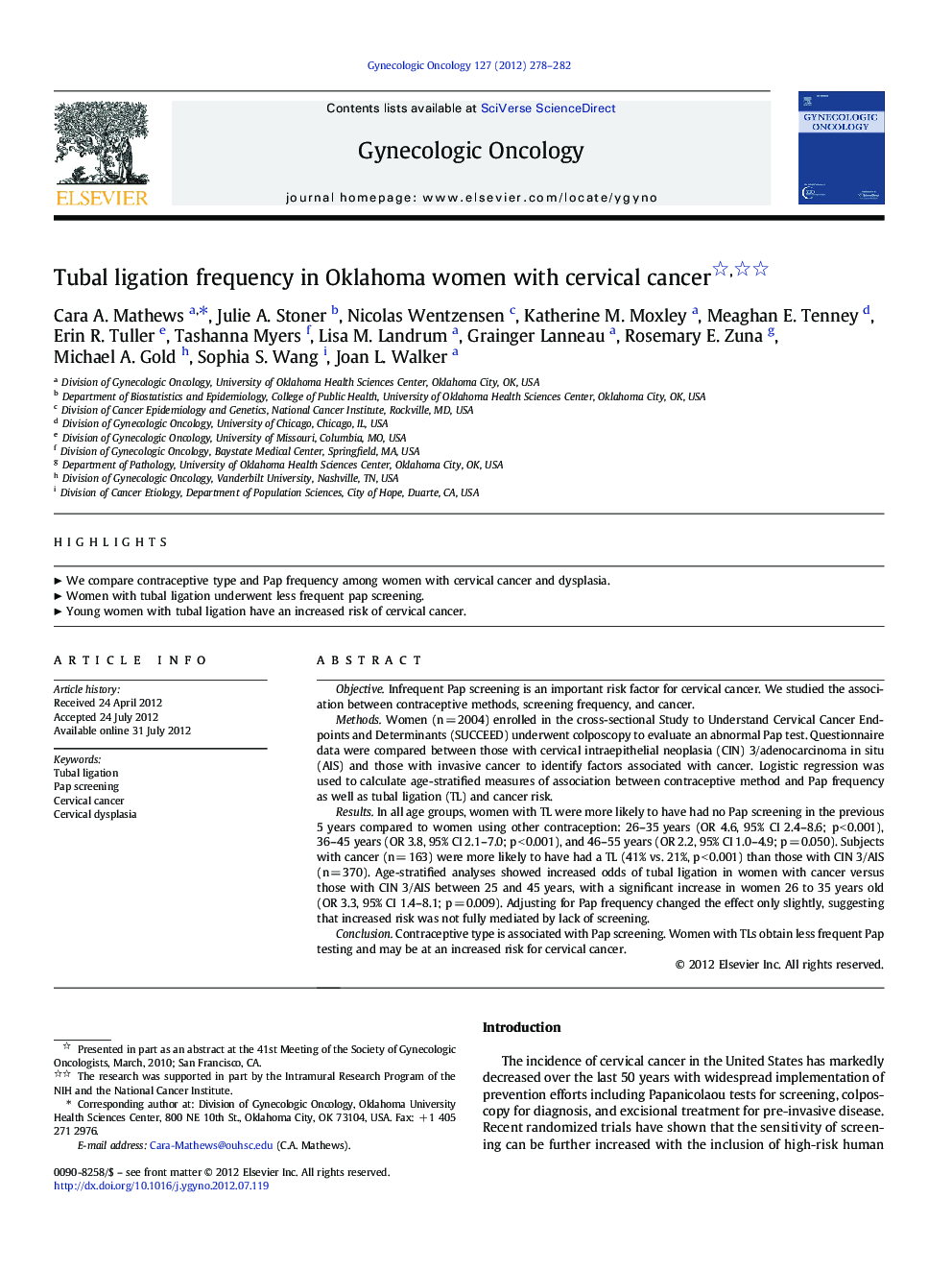| Article ID | Journal | Published Year | Pages | File Type |
|---|---|---|---|---|
| 3944915 | Gynecologic Oncology | 2012 | 5 Pages |
ObjectiveInfrequent Pap screening is an important risk factor for cervical cancer. We studied the association between contraceptive methods, screening frequency, and cancer.MethodsWomen (n = 2004) enrolled in the cross-sectional Study to Understand Cervical Cancer Endpoints and Determinants (SUCCEED) underwent colposcopy to evaluate an abnormal Pap test. Questionnaire data were compared between those with cervical intraepithelial neoplasia (CIN) 3/adenocarcinoma in situ (AIS) and those with invasive cancer to identify factors associated with cancer. Logistic regression was used to calculate age-stratified measures of association between contraceptive method and Pap frequency as well as tubal ligation (TL) and cancer risk.ResultsIn all age groups, women with TL were more likely to have had no Pap screening in the previous 5 years compared to women using other contraception: 26–35 years (OR 4.6, 95% CI 2.4–8.6; p < 0.001), 36–45 years (OR 3.8, 95% CI 2.1–7.0; p < 0.001), and 46–55 years (OR 2.2, 95% CI 1.0–4.9; p = 0.050). Subjects with cancer (n = 163) were more likely to have had a TL (41% vs. 21%, p < 0.001) than those with CIN 3/AIS (n = 370). Age-stratified analyses showed increased odds of tubal ligation in women with cancer versus those with CIN 3/AIS between 25 and 45 years, with a significant increase in women 26 to 35 years old (OR 3.3, 95% CI 1.4–8.1; p = 0.009). Adjusting for Pap frequency changed the effect only slightly, suggesting that increased risk was not fully mediated by lack of screening.ConclusionContraceptive type is associated with Pap screening. Women with TLs obtain less frequent Pap testing and may be at an increased risk for cervical cancer.
► We compare contraceptive type and Pap frequency among women with cervical cancer and dysplasia. ► Women with tubal ligation underwent less frequent pap screening. ► Young women with tubal ligation have an increased risk of cervical cancer.
